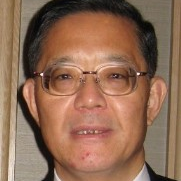State-of-the-Art Energy Related Technologies in Japan 2021
A special issue of Energies (ISSN 1996-1073). This special issue belongs to the section "K: State-of-the-Art Energy Related Technologies".
Deadline for manuscript submissions: closed (31 December 2021) | Viewed by 9998
Special Issue Editors
Interests: high-efficiency energy conversion system; renewable energy in small islands; optimization of power system operation and control
Special Issues, Collections and Topics in MDPI journals
Interests: advanced thermal and fluids science and technology: flow-induced vibrations; small-scale energy systems with gas turbines and heat pumps; experimental fluid dynamics; heat transfer; biomedical engineering; artificial intelligence
Special Issues, Collections and Topics in MDPI journals
Interests: energy systems; process design; power generation; carbon capture and storage; hydrogen production; renewable energy; energy conservation; energy and exergy analysis; exergy recovery; electric vehicle; batteries; smart grid
Special Issues, Collections and Topics in MDPI journals
Interests: power quality analysis; harmonics estimation; renewable energy control and management; optimization of power system operation and control; meta-heuristic optimization theory and applications
Special Issues, Collections and Topics in MDPI journals
Interests: electrical and electronics
Interests: process design and control, optimization, heat integration, and energy/exergy analysis in chemical and energy processes
Special Issue Information
Dear Colleagues,
In Japan, the sustainable development of economy, energy, and the environment has become an important issue of global concern since 2000. A consensus has already been established regarding the development of a low carbon economy. Japan is designing and implementing low-emission development strategies in 2021. Recent advances in technology and policy in Japan 2021 will allow renewable energy, clean energy, and energy efficiency to play major roles in displacing fossil fuels and meeting global energy demand while reducing carbon dioxide emissions. Renewable and clean energy technologies are being rapidly commercialized and, in conjunction with efficiency gains, can achieve far greater emissions reductions than either could independently.
This Special Issue will provide a comprehensive overview on the state-of-the-art energy-related technologies in Japan. Research articles are invited, which will provide a consolidated, up-to-date perspective in energy-related areas. The Special Issue will publish full research papers and reviews. Potential topics include but are not limited to the topics outlined in the keywords.
Prof. Dr. Tomonobu Senjyu
Prof. Emer Satoru Okamoto
Prof. Dr. Muhammad Aziz
Dr. Mahdi Khosravy
Dr. Ryuto Shigenobu
Prof. Dr. Yasuki Kansha
Prof. Dr. Takuya Oda
Guest Editors
Manuscript Submission Information
Manuscripts should be submitted online at www.mdpi.com by registering and logging in to this website. Once you are registered, click here to go to the submission form. Manuscripts can be submitted until the deadline. All submissions that pass pre-check are peer-reviewed. Accepted papers will be published continuously in the journal (as soon as accepted) and will be listed together on the special issue website. Research articles, review articles as well as short communications are invited. For planned papers, a title and short abstract (about 100 words) can be sent to the Editorial Office for announcement on this website.
Submitted manuscripts should not have been published previously, nor be under consideration for publication elsewhere (except conference proceedings papers). All manuscripts are thoroughly refereed through a single-blind peer-review process. A guide for authors and other relevant information for submission of manuscripts is available on the Instructions for Authors page. Energies is an international peer-reviewed open access semimonthly journal published by MDPI.
Please visit the Instructions for Authors page before submitting a manuscript. The Article Processing Charge (APC) for publication in this open access journal is 2600 CHF (Swiss Francs). Submitted papers should be well formatted and use good English. Authors may use MDPI's English editing service prior to publication or during author revisions.
Keywords
- Renewable energy
- Energy efficiency
- Sustainable biofuels
- Nuclear power
- Smart grid
- Methane cycle
- Carbon capture and storage
- Combined heat and power
- Electric vehicles
- Hydrogen
- Smart city
- Zero energy house/building
- Power electronics
- Power system
- Waste to energy
- Ammonia
- Energy storage
- Energy conversion
- Power generation









